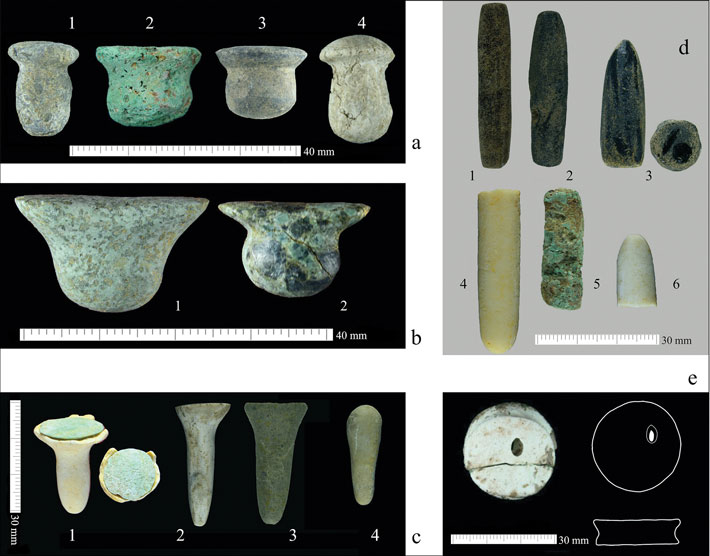 ANKARA, TURKEY—According to a Newsweek report, more than 100 objects recovered from graves of adults in southeastern Anatolia at the site of Boncuklu Tarla are thought to have been worn as body piercings. The 11,000-year-old ornaments, made in various sizes and shapes of limestone, obsidian, and river pebbles, were found near the ears and chins of human remains, said archaeologist Emma Baysal of Ankara University, and could have been worn as earrings and labrets, or lower lip piercings. Wear on the lower incisors is consistent with wear produced by labret-wearing in modern people, she explained. “We think these are the earliest examples yet recorded in their original context on the skeletons of the people who used them,” Baysal said. “We have earlier indirect evidence of labret use from other sites—but this is through wear on teeth and not directly from ornaments on skeletons.” The new evidence could lead to the reidentification of hundreds of artifacts recovered from Neolithic sites across western Asia and eastern Europe, Baysal concluded. Read the original scholarly article about this research in Antiquity. To read about piercing among the Maya in Central America, go to "From Head to Toe in the Ancient Maya World: Earrings."
ANKARA, TURKEY—According to a Newsweek report, more than 100 objects recovered from graves of adults in southeastern Anatolia at the site of Boncuklu Tarla are thought to have been worn as body piercings. The 11,000-year-old ornaments, made in various sizes and shapes of limestone, obsidian, and river pebbles, were found near the ears and chins of human remains, said archaeologist Emma Baysal of Ankara University, and could have been worn as earrings and labrets, or lower lip piercings. Wear on the lower incisors is consistent with wear produced by labret-wearing in modern people, she explained. “We think these are the earliest examples yet recorded in their original context on the skeletons of the people who used them,” Baysal said. “We have earlier indirect evidence of labret use from other sites—but this is through wear on teeth and not directly from ornaments on skeletons.” The new evidence could lead to the reidentification of hundreds of artifacts recovered from Neolithic sites across western Asia and eastern Europe, Baysal concluded. Read the original scholarly article about this research in Antiquity. To read about piercing among the Maya in Central America, go to "From Head to Toe in the Ancient Maya World: Earrings."
Possible Neolithic Body Piercings Unearthed in Anatolia
